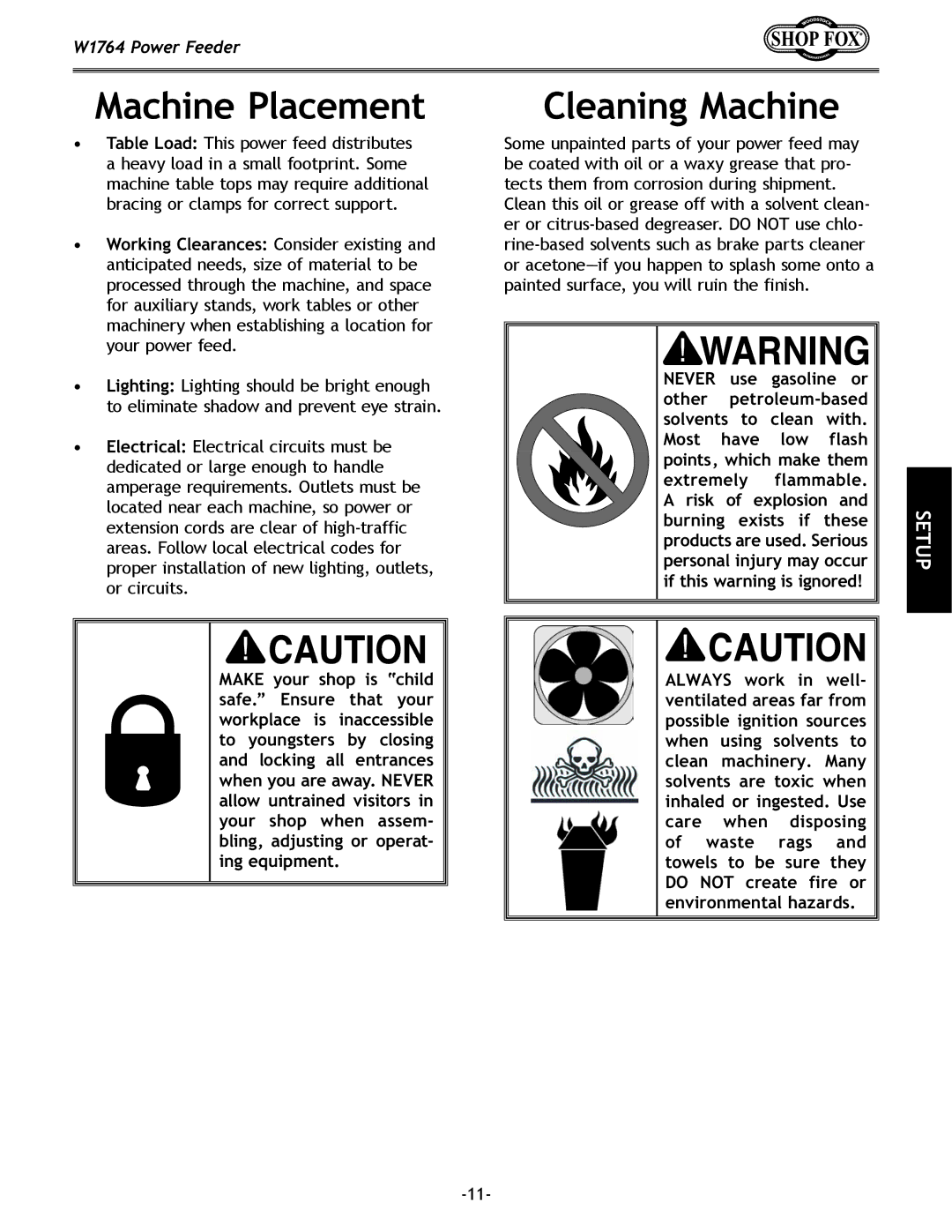
W1764 Power Feeder
Machine Placement | Cleaning Machine |
•Table Load: This power feed distributes a heavy load in a small footprint. Some machine table tops may require additional bracing or clamps for correct support.
•Working Clearances: Consider existing and anticipated needs, size of material to be processed through the machine, and space for auxiliary stands, work tables or other machinery when establishing a location for your power feed.
•Lighting: Lighting should be bright enough to eliminate shadow and prevent eye strain.
•Electrical: Electrical circuits must be dedicated or large enough to handle amperage requirements. Outlets must be located near each machine, so power or extension cords are clear of
MAKE your shop is “child safe.” Ensure that your workplace is inaccessible to youngsters by closing and locking all entrances when you are away. NEVER allow untrained visitors in your shop when assem- bling, adjusting or operat- ing equipment.
Some unpainted parts of your power feed may be coated with oil or a waxy grease that pro- tects them from corrosion during shipment.
Clean this oil or grease off with a solvent clean- er or
NEVER use gasoline or other
ALWAYS work in well- ventilated areas far from possible ignition sources when using solvents to clean machinery. Many solvents are toxic when inhaled or ingested. Use care when disposing of waste rags and towels to be sure they DO NOT create fire or environmental hazards.
SETUP
